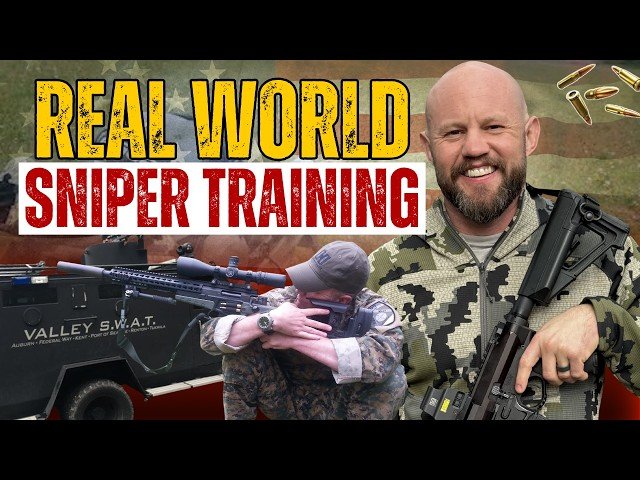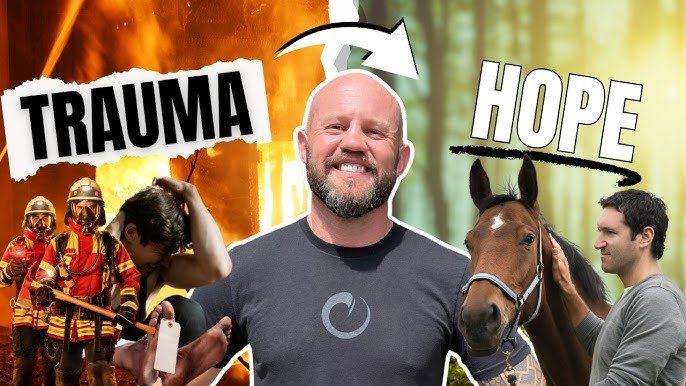Life as a SWAT Sniper: Inside 21 Years of Tactical Law Enforcement
When most people think “sniper,” they picture Hollywood: a lone operator on a distant ridge lining up a thousand-yard shot. The truth is very different. In law enforcement, sniper work is measured in yards, not miles. It’s closer, faster, and far more tactical.
In this episode of the North Idaho Experience podcast, we sit down with Mike Bertucci, former Federal Way PD officer, longtime SWAT sniper, and founder of SniperCraft Northwest. With over 21 years on a regional SWAT team just south of Seattle, Mike has lived through hundreds of callouts, a high-risk officer-involved shooting, and decades of specialized training. Now retired and based in North Idaho, he trains the next generation of law enforcement snipers across the country.
What follows is a deep dive into the realities of being a police sniper: the distances, the training, the stress, and the responsibility that comes with being the last line of defense when negotiations fail.
Why Police Snipers Shoot at 56 Yards
Forget the thousand-yard hero shot. For law enforcement, the average sniper engagement over the past 30 years has been 56 yards. Why? Because SWAT teams work in urban environments. Instead of mountains and fields, it’s apartment complexes, backyards, and residential streets.
“You’re often across the street from the crisis site,” Mike explains. “A hundred yards, maybe 200. The majority of our job is observing, communicating, and being ready for the close-range shot that ends the threat.”
Training reflects that reality. While military courses may emphasize extreme distance, Mike stresses the importance of practical application: running scenarios, positional shooting, and re-running the basics until they’re instinctive.
Training for Stress, Not Just Accuracy
Plenty of people can shoot tight groups at a range. But what happens when you’ve sprinted 400 yards, your heart is pounding, and you have to make a hostage rescue shot through glass?
That’s the environment Mike prepares students for. With SniperCraft Northwest, qualification isn’t about flat ranges and bench rests. It’s about stress inoculation: awkward shooting positions, fast transitions, and decision-making under pressure.
“I can train a monkey to shoot well from a bench,” Mike says. “The weak link is the human behind the rifle. That’s what we train.”
Recon First, Trigger Second
While Hollywood glorifies the shot, most of a sniper’s value lies in intel. From concealed positions, snipers can see angles that entry teams cannot: weapons inside a suspect’s hands, room layouts, even behavioral cues that help negotiators.
That intel can make the difference between safe containment and tragedy.
“Even if I never take a shot,” Mike explains, “I might tell my team, ‘The suspect has an AK-47,’ or ‘There are two kids moving between bedrooms.’ That’s critical information.”
This is why Mike believes snipers should be deployed on every callout. Even if no trigger is pulled, the optic alone can change the outcome.
The Reality of Taking the Shot
When a sniper does take the shot, there’s no margin for error. Law enforcement snipers don’t shoot to wound. If it has escalated to the point of firing, the shot must stop the threat immediately.
Mike recalls his own officer-involved shooting in 2005. After a ten-hour standoff in a three-story apartment complex, he fired through glass at a barricaded suspect who had already exchanged fire with SWAT. His round deflected slightly but struck the suspect in the throat, ending the incident.
“It’s not like the movies,” he says. “You don’t shoot the gun out of a hand. You train for cranial vault shots because that’s instant incapacitation. If a sniper fires, it’s because lives are at immediate risk.”
The aftermath is its own battle. From inquests to civil lawsuits, every action is dissected. Mike was fortunate that his case was ruled justified without a civil suit, but he notes that many officers aren’t so lucky.
Why Training Never Stops
Mike’s partner and current business associate, Phil Glover, served nearly 30 years as a sniper without ever taking a shot. That’s common — and it underscores why training never stops.
“You have to be ready every day of your career,” Mike explains. “You might never fire in the field. But the one time you do, it has to be perfect.”
This is why SniperCraft Northwest emphasizes real-world scenarios and competition. National sniper competitions and “Sniper Week” events in Florida bring together teams from around the world, adding stress and stakes that can’t be replicated on a training range.
“Competition puts you under pressure,” Mike says. “Your team is watching, other agencies are watching. You learn more from one stressful event than from a year of flat-range shooting.”
SniperCraft Northwest: Training the Next Generation
When Washington stopped offering state-run sniper training, Mike and his colleagues stepped up. Partnering with national leaders in the American Sniper Association, they created SniperCraft Northwest, delivering basic and advanced courses across Washington, Idaho, and beyond.
The mission: teach cops what they’ll actually face in the field. From barrier penetration drills to legal considerations, the training is designed to make snipers competent, not just capable.
And while civilians often ask, SniperCraft Northwest doesn’t train the public. The risk of skills being misused is too high. Instead, the focus remains on sworn officers, corrections, and tactical teams that need these lifesaving skills.
Life After the Rifle
Today, Mike lives in Bayview, Idaho, part of a community rich with veterans, retired cops, and first responders. He jokes that you “can’t throw a rock without hitting one.” It’s a community where shared experience and quiet readiness are part of the culture.
“Idaho isn’t immune to problems,” Mike admits. “But it’ll be one of the last places to fall. And I’m glad to be here, surrounded by people who care about protecting what makes this place special.”
Final Thoughts
The life of a SWAT sniper is not glamorous. It’s patience, observation, and relentless training for a moment that may never come. Yet when that moment does arrive, it is decisive.
Mike Bertucci’s story is not just about rifles and tactics — it’s about accountability, humility, and a career dedicated to protecting others. And through SniperCraft Northwest, he’s ensuring the next generation of law enforcement snipers are trained not for Hollywood, but for reality.
Listen, Watch, Read






Your Guide to Idaho’s Best-Kept Secrets
Join our email list for exclusive insights, local tips, and the latest listings. Get closer to the Idaho lifestyle you’ve been dreaming of. Sign up today!




